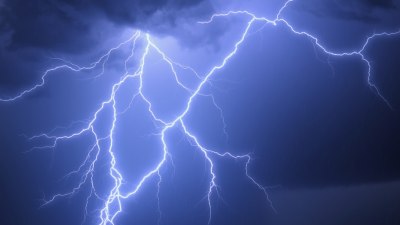How Planes Avoid Storms and What Happens If They Don’t
Explore how aircraft navigate around storms and the consequences of flying through them.

Image by greatphillips98 on Freepik
Flying through a storm can be an aviator's worst nightmare, but thankfully, modern aircraft have sophisticated systems in place to avoid severe weather conditions. Understanding how planes navigate around storms and what might happen if they don’t is essential for both aviation professionals and air travelers alike.
To grasp how planes avoid storms, we first need to consider the various types of weather phenomena that can affect aviation. Thunderstorms, especially, pose a significant risk due to their associated turbulence, lightning, and potential hail. Moreover, the unpredictable nature of storm systems makes them particularly dangerous for aircraft flying through or near them.
Predictive Weather Technology
Airlines employ advanced radar and satellite technology to monitor storm systems in real time. Meteorologists provide updates about weather patterns that could interfere with flight plans well in advance. This information allows airlines to reroute flights before takeoff or during the flight if storms are detected along the route.
One such technology is the Weather Avoidance System (WAS), which combines radar data with meteorological forecasting to visualize storm patterns. Pilots receive continuous updates via onboard weather radars, allowing them to adjust their course dynamically if they approach severe weather conditions.
Flight Planning and Rerouting
Before a flight, pilots and flight dispatchers analyze predicted weather conditions. Using flight planning software, they can determine the safest and most efficient route, avoiding anticipated storm zones. The flight plan is continuously revised, taking into account changes in weather as the flight progresses.
In many instances, if a storm is forecasted along a planned route, airlines choose a different path that could significantly increase flight duration but ensures passenger safety. For example, if a thunderstorm is detected over the intended flight path, pilots may opt to fly at a different altitude or completely change course to circumvent potential storm impacts.
Onboard Weather Radars
Modern commercial aircraft are equipped with onboard weather radar systems that detect precipitation and storm patterns. Pilots can use this information to identify whether they can safely navigate around a storm. If severe weather is detected, pilots comply with Standard Operating Procedures that involve climbing, descending, or changing headings to avoid turbulence and storm systems.
Weather radar allows pilots to see real-time weather conditions ahead, but it does not measure turbulence directly. Instead, it showcases areas of precipitation, which helps pilots make informed decisions to maintain passenger safety.
Turbulence and Wind Shear
Failure to avoid storms can lead to encountering severe turbulence, which can make flying troublesome and uncomfortable, particularly for passengers. Severe turbulence can also pose risks such as structural stress on the airplane and injury to unbelted passengers and crew.
Moreover, other dangerous phenomena, such as wind shear, can occur in storm conditions. Wind shear is a sudden change in wind direction or speed at a given altitude and can create dangerous flying conditions, especially during takeoff and landing. Pilots are trained to handle these situations but still prefer to avoid them entirely when possible.
Consequences of Flying Through Storms
If a plane inadvertently finds itself flying through a storm, the consequences can vary significantly. In less severe cases, passengers may experience a rough ride accompanied by anxiety but little else. Yet, in severe thunderstorms, pilots might face several risks, including significant turbulence, hail damage, and lightning strikes.
Aircraft are designed to withstand a considerable amount of stress, including turbulence and lightning strikes, but flying through a severe storm is still not advisable. Hail, in particular, can cause severe damage to the aircraft's windshield and engine parts, leading to potential emergencies.
Approaches to Land
Landing in stormy conditions can also present significant challenges. Pilots must remain hyper-vigilant when approaching runways in inclement weather. Often, heavy rainfall and high winds can drastically alter landing conditions, requiring additional adjustments in approach and landing techniques.
Airports have strict protocols in place for weather conditions, and in the case of severe storms, they may temporarily close runways or delay incoming flights. Pilots and air traffic control work together to ensure safety during these critical phases of flight.
Pilot Training and Experience
Pilots receive extensive training to manage various weather scenarios. Simulators are utilized to prepare them for unexpected events, including storm encounters. This training is essential not only for technical skills but also for decision-making under pressure.
Experience also plays a crucial role in weather avoidance. Pilots draw from past experiences to make real-time decisions based on their understanding of how storms behave and their effects on aircraft dynamics.
Cooperation with Air Traffic Control
Throughout the flight, open communication between pilots and air traffic controllers is crucial for safety. Air Traffic Control (ATC) plays a vital role in providing timely updates about weather conditions and potential hazards in the aircraft’s vicinity. When storms develop, ATC will often reroute air traffic, ensuring aircraft maintain safe distances from severe weather.
Pilots must be proactive in discussing weather conditions with ATC, seeking guidance and assistance whenever necessary to avoid dangerous situations. This collaborative effort enhances overall flight safety and minimizes the chances of encountering severe weather.
Technology Advancements
The aviation industry continually develops and employs new technologies that enhance safety and efficiency when avoiding storms. For instance, the introduction of predictive analytics and artificial intelligence aids pilots in making informed decisions based on complex weather data.
Future advancements might incorporate more sophisticated storm prediction tools that will provide even greater accuracy in forecasting weather patterns, allowing aircraft to navigate safely around storms before these systems develop into significant threats.
Understanding how planes avoid storms is critically important in promoting aviation safety. Modern aircraft are equipped with sophisticated technology that informs pilots in real time about changing weather conditions, allowing them to make informed decisions for safe travel.
The consequences of flying through storms can be severe; turbulence, wind shear, and even lightning strikes present challenges that aircraft must navigate. However, by employing rigorous weather avoidance strategies, utilizing advanced technology, and fostering clear communication between pilots and ATC, the aviation industry continues to ensure that flying remains one of the safest modes of transportation. The ongoing evolution of technology in weather prediction will only further enhance flight safety, making storm encounters more manageable in the future.











